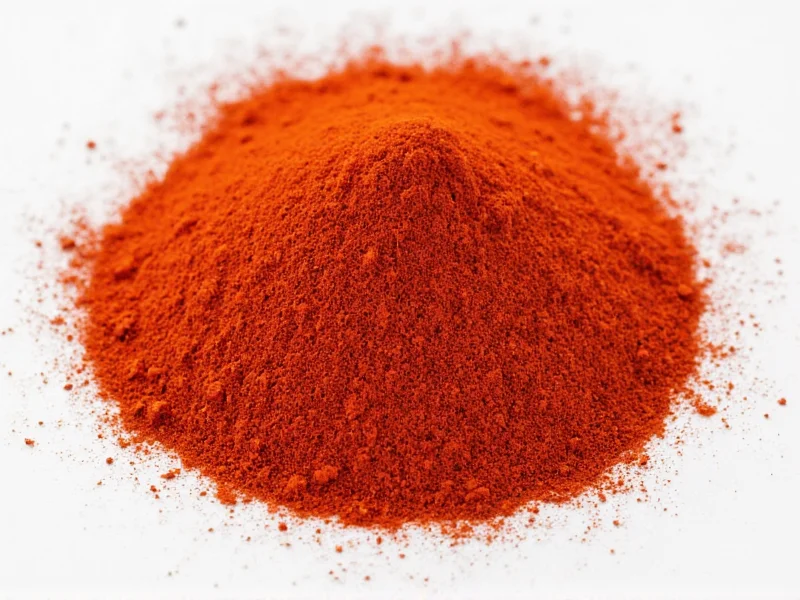Running out of paprika doesn't have to ruin your cooking plans. Whether you're preparing traditional Hungarian goulash, Spanish paella, or simply seasoning roasted vegetables, knowing what can replace paprika keeps your culinary creations on track. This comprehensive guide explores practical alternatives that maintain flavor integrity while accommodating different dietary needs and pantry limitations.
Understanding Paprika's Role in Cooking
Paprika serves multiple functions in recipes: it provides vibrant red color, contributes earthy sweetness, and can add varying levels of heat depending on the variety. Sweet paprika offers mild flavor and rich color, while smoked paprika delivers a distinctive campfire aroma, and hot paprika brings noticeable spiciness. When seeking what can replace paprika, consider which aspect matters most for your specific dish—color, flavor, or heat.
Top Paprika Substitutes Ranked by Effectiveness
Not all paprika alternatives work equally well in every situation. The right replacement depends on your recipe's requirements and what you have available in your pantry. Here's a detailed comparison of the most effective options:
| Substitute | Best For | Substitution Ratio | Flavor Impact |
|---|---|---|---|
| Chili Powder | General cooking, chili recipes | 1:1 | Milder heat with cumin undertones |
| Smoked Paprika | Recipes needing smoky flavor | 1:1 | Distinctive wood-smoke aroma |
| Cayenne Pepper | When heat is primary requirement | 1/4 tsp cayenne = 1 tsp paprika | Significantly spicier, less color |
| Tomato Paste | Color without heat | 1 tbsp paste = 1 tsp paprika | Sweet tomato flavor, rich color |
| Red Bell Pepper Powder | Sweet paprika replacement | 1:1 | Milder, sweeter alternative |
Detailed Analysis of Each Paprika Alternative
Chili Powder: The Most Accessible Substitute
Chili powder makes an excellent paprika replacement when you need what can replace paprika in recipes requiring moderate heat. While traditional chili powder contains additional spices like cumin and garlic powder, it provides similar color and heat levels. For best results when looking for paprika substitutes for chicken dishes, use pure chili powder without added seasonings, or create your own blend using cayenne and sweet paprika alternatives.
Smoked Paprika Alternatives for Non-Smoked Recipes
If your recipe calls for regular sweet paprika but you only have smoked paprika, reduce the amount by half and balance with a touch of sweetener. Conversely, when seeking smoked paprika alternatives for cooking without the smoky element, combine sweet paprika with a small amount of liquid smoke (just 1/8 teaspoon per teaspoon of paprika) for controlled smokiness.
Cayenne Pepper: For Heat-Focused Substitutions
Cayenne delivers intense heat without the characteristic color of paprika. When determining how to replace paprika in goulash or other hearty stews where color matters, combine cayenne with tomato paste to maintain visual appeal. Start with 1/4 teaspoon cayenne for every teaspoon of paprika called for, then adjust to taste.
Recipe-Specific Paprika Substitutions
The ideal paprika replacement varies by dish. Understanding paprika replacement with similar flavor profiles for specific cuisines ensures your recipes maintain authenticity:
- For Hungarian Goulash: Use a combination of tomato paste and a pinch of caraway seeds to mimic traditional flavor. This addresses how to replace paprika in goulash while maintaining cultural authenticity.
- For Spanish Dishes: Smoked paprika alternatives for cooking should include a touch of saffron for color and a hint of smoked salt for depth.
- For Rubs and Marinades: Create a non-spicy paprika substitute option using equal parts garlic powder, onion powder, and dried sweet red pepper.
- For Deviled Eggs: A paprika substitute for chicken dishes like this classic appetizer works best with a light dusting of cayenne mixed with a bit of turmeric for color.
Creating Your Own Homemade Paprika Alternative
When exploring what can I use instead of paprika in recipes, consider making your own custom blend. This homemade paprika alternative recipe gives you control over heat level and flavor profile:
- Dry roast 2 large red bell peppers until skins blister
- Peel and de-seed the peppers
- Dehydrate the flesh at lowest oven setting for 6-8 hours
- Grind to fine powder in spice grinder
- For heat: Add 1/2 teaspoon cayenne per cup of powder
- For smokiness: Add 1/4 teaspoon chipotle powder per cup
Store your homemade substitute in an airtight container away from light. This DIY approach solves the problem of what can replace paprika when commercial options aren't available while ensuring freshness and customization.
Common Substitution Mistakes to Avoid
Many home cooks make critical errors when replacing paprika that compromise their dishes:
- Overcompensating for heat: Using too much cayenne when seeking paprika substitutes for chicken dishes creates overpowering spice.
- Ignoring color impact: Failing to address the visual element when determining how to replace paprika in goulash results in dull-looking stews.
- Mixing incompatible flavors: Adding smoked elements to dishes that traditionally use sweet paprika creates flavor confusion.
- Not adjusting liquid content: Tomato-based substitutes add moisture that may require reducing other liquids in your recipe.
Special Dietary Considerations
For those with specific dietary needs, paprika alternatives must address both flavor and restriction requirements. When exploring non-spicy paprika substitute options for sensitive palates, consider roasted beet powder for color without heat. Those avoiding nightshades (which include peppers) can use annatto seeds steeped in oil to achieve similar coloring properties while maintaining paprika replacement with similar flavor characteristics through complementary spices like cumin and coriander.











 浙公网安备
33010002000092号
浙公网安备
33010002000092号 浙B2-20120091-4
浙B2-20120091-4